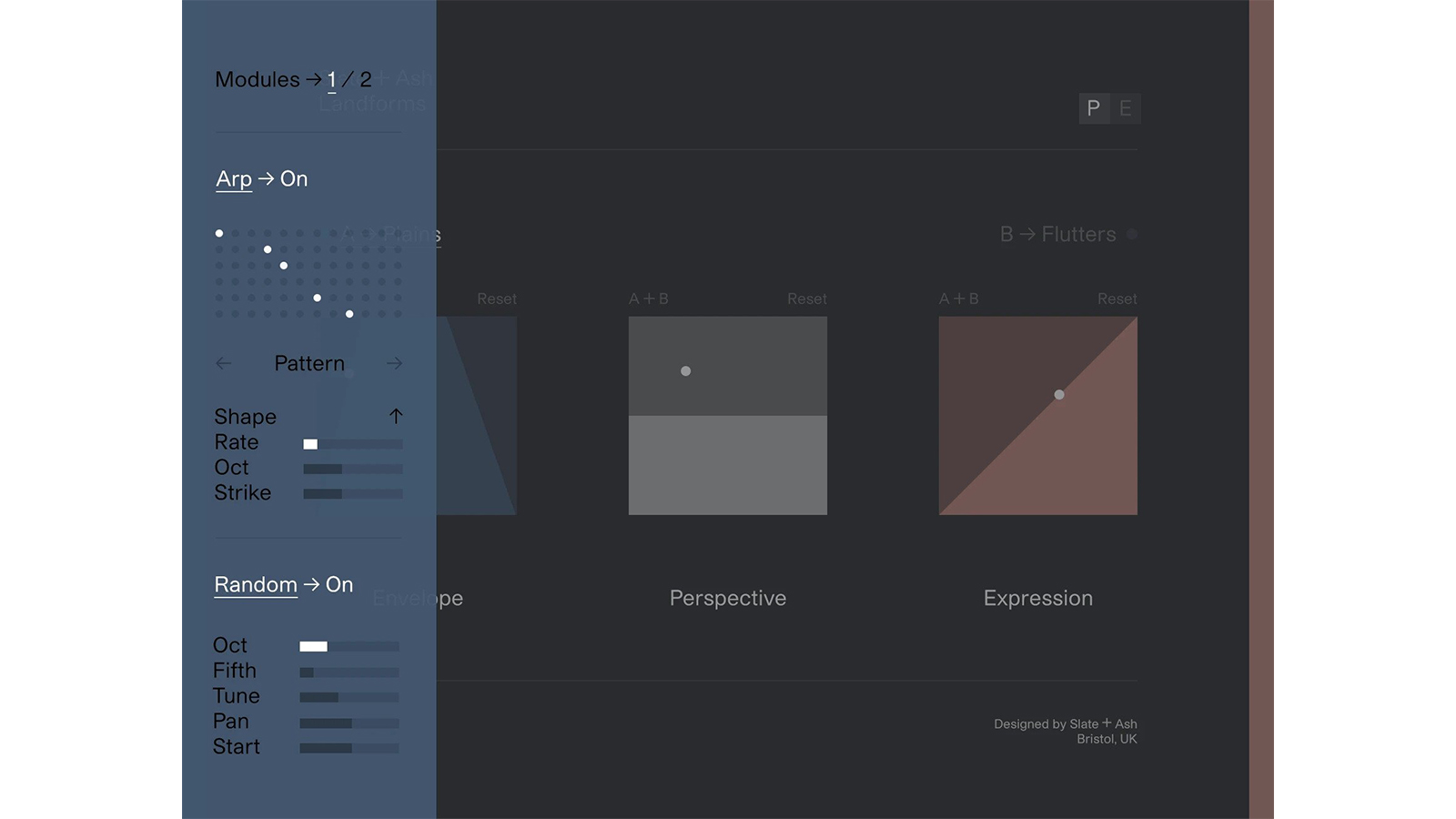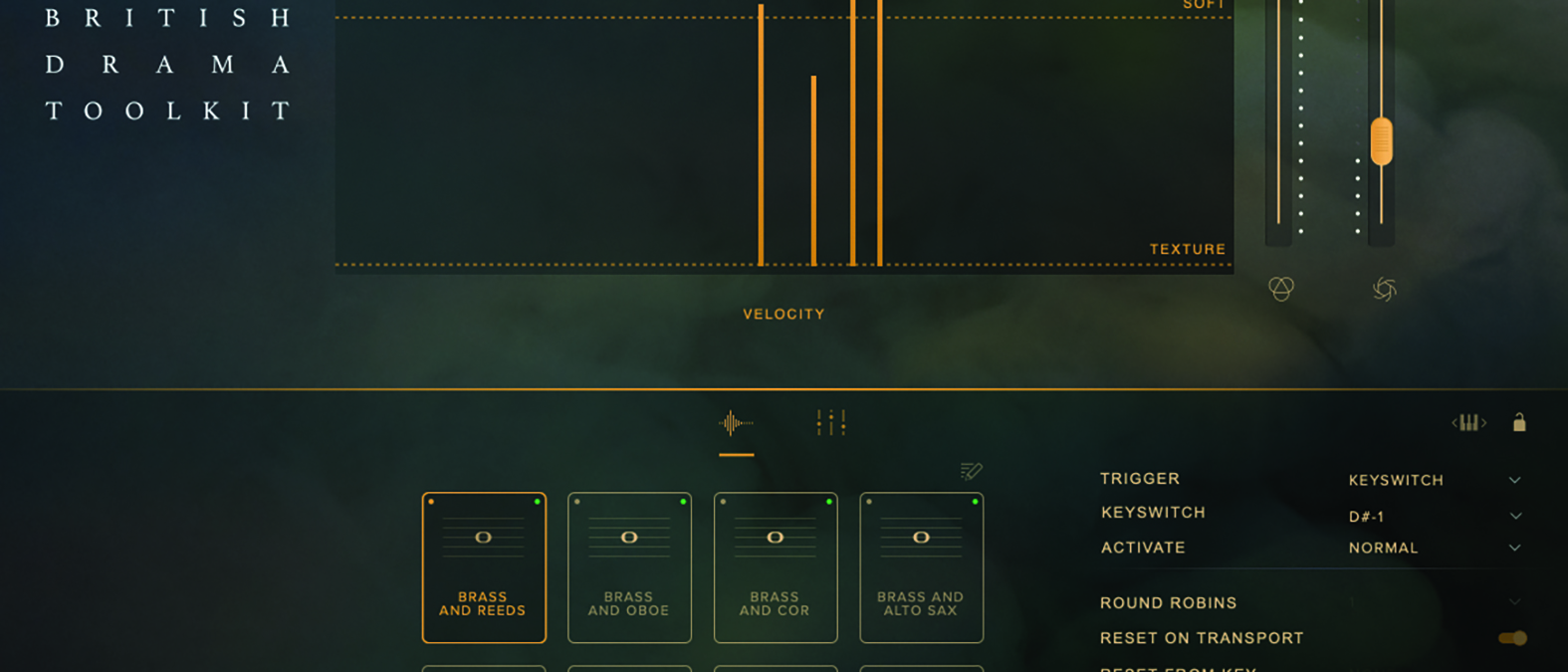MusicRadar Verdict
Instantly usable for anyone who enjoys British drama, but with the capacity to extend way beyond this remit.
Pros
- +
Very interesting instrumentation.
- +
Gratifying to use from the get-go.
- +
It can sound mellow and angsty.
- +
BDT’s sonic representations can go way beyond the cinematic.
Cons
- -
Lacks round-robins in places.
- -
Occasional unintended tuning issues.
MusicRadar's got your back
Spitfire Audio British Drama Toolkit: Brass and Reeds: What is it?
Spitfire Audio doesn’t attempt to disguise its passion for musical scoring to picture, through an ever-swelling catalogue that equips modern soundtrackers brilliantly. But is there more to its products, for those who might want to produce music away from a narrative?
The second and much anticipated BDT shadows Spitfire’s initial BDT release; once again, Spitfire has called upon the amazing talents of Samuel Sim, a British TV composer with an impressive roster of credits across BBC TV and Netflix. Much of his work is based around narrative scoring, so you can see where BDT might lead.
Spitfire Audio British Drama Toolkit: Brass and Reeds: Performance and verdict
Unlike the more bombastic orchestral libraries that we find in the marketplace, this package continues the subtler ethos of the original BDT, focusing on intimate sounds (which for the most part react according to the amount of velocity that you employ in your playing).

• Slate + Ash Landforms
Stylishly presented acoustic instruments, with interesting flourishes, recorded at Real World.
• Spitfire Audio British Drama Toolkit
You can’t not mention vol. 1 of BDT here. A string-and-woodwind-based palette, for soundscapes and more.
BDT Brass and Reeds uses a slightly different palette of sounds from before, with a complement of both brass and wind instruments, some of which are not your more usual choices. The Brass contingent is very mellow; tuba and trombones are joined by the less obvious tenor horn and flugelhorn. With a darker timbre, there’s no sense of raspiness.
The Reeds section bolsters the brass, with contrabassoon (a version of bassoon which is one octave below a regular bassoon), cor anglais and oboe. A saxophone section also gets an outing, with representations from baritone, alto, soprano and the irregular bass sax, all included. There’s also a recorder ensemble which, although strictly speaking a wind instrument rather than reed, adds more mellow colour to the patching.
All of the instruments are provided in multiple articulation and patch settings, although this is very much about texture, beds and colour, rather than any overwhelming sense of musical phrase. This is not the library for you if you want a legato flugel or cor anglais, as becomes immediately apparent when playing patches.
The first 15 patches are all layered combinations, or Combis. You’ll find brass layered with reeds, reeds layered with flugelhorn, and so on. The colour of each note is chosen according to the velocity of each note. You might play a softer note, which yields a brass colour, while a higher velocity note might promote an oboe to pop its head above the parapet. It takes a little practice to find your point of equilibrium, but it can quickly become as engaging as it is satisfying.
Want all the hottest music and gear news, reviews, deals, features and more, direct to your inbox? Sign up here.
The independents
While the Combis are immediately gratifying, the patches at the independent instrument level arguably provide greater control and flexibility. The articulation set is also unique to each instrument, so you’ll find basic brass long notes and swells, alongside some unique oddities, such as chattering saxophones, and recorders going ‘chiff’ or heavily bending the pitch. These can be fun starting points.
We did find a few little annoyances along the way though; there’s a lack of round-robins in some patches, giving rise to singular notes which unintentionally meander considerably in tuning, or a chattering alto sax which oddly provides far more silence than chatter. Arguably, the space around the notes is just as important, and it will depend on how you intend to use BDT:B&R as to whether those silences work
for you.
The mellow and intricate nature of much of the patching extends way beyond the product’s USP
This is another unique addition to the Spitfire lineup, and one that is quite endearing. The mellow and intricate nature of much of the patching extends way beyond the product’s USP. If you are in the business of composing or producing music which could be regarded as cinematic in nature – whether literally or otherwise – this could provide plenty of inspiration. Given its complex acoustic makeup, it could be regarded as quite the bargain.
MusicRadar verdict: Instantly usable for anyone who enjoys British drama, but with the capacity to extend way beyond this remit.
Spitfire Audio British Drama Toolkit: Brass and Reeds: Hands-on demos
Spitfire Audio
Sample Library Review
The Sampleist
Simeon Amburgey
Spitfire Audio British Drama Toolkit: Brass and Reeds: Specifications
- Mac OS X 10.13 to OS X 12. Minimum: 2.8GHz i5 (quad-core), 8GB RAM. Recommended: 2.8GHz i7 (six-core), 16GB RAM. Intel and M1 Macs supported. 64-bit DAW Required (32-bit DAWs not supported).
- Windows 10 and Windows 11 (latest Service Pack, 64-bit). Minimum: Intel Core 2.8GHz i5 (quad-core) or AMD Ryzen 5, 8GB RAM. Recommended: Intel 2.8GHzi7 (six-core) or AMD R7 2700, 16GB RAM. 64-bit DAW required (32-bit DAWs not supported).
- 8GB disk space required during install.
- CONTACT: Spitfire Audio
